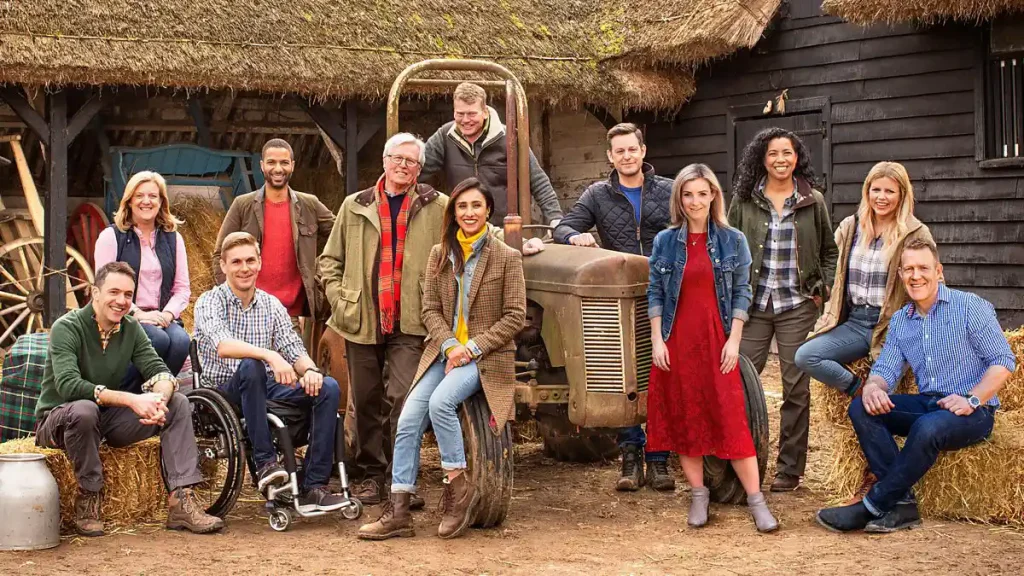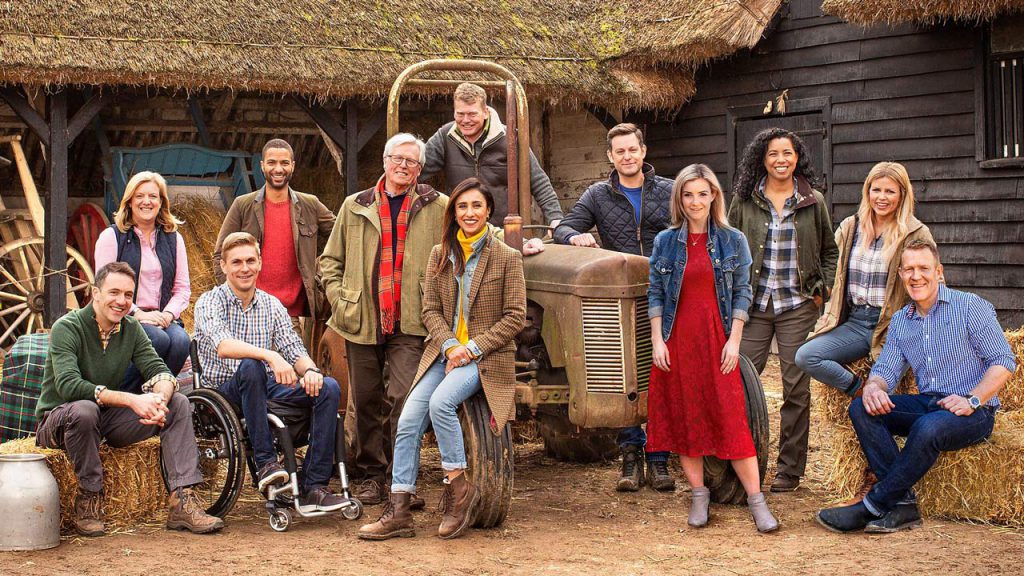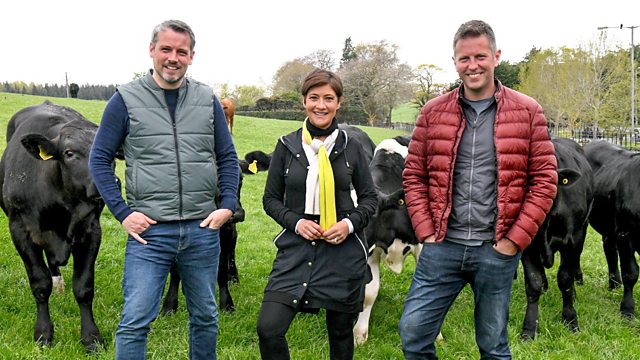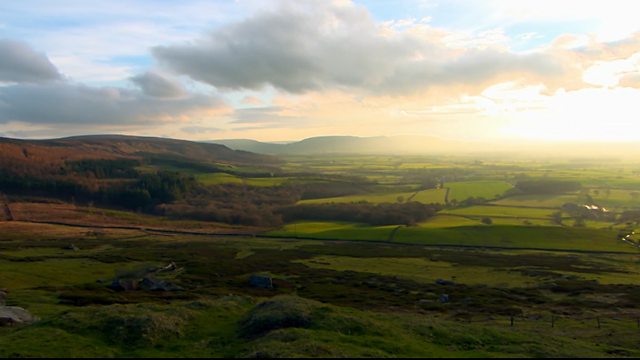Countryfile – Hay Time – It’s that time of year again when the hot summer sun beats down on the countryside, bringing the farmers out to the fields to make hay while the sun shines. In the idyllic English countryside, Charlotte Smith finds herself immersed in the annual hay harvest, a centuries-old tradition still alive today. Despite having no prior experience driving farm equipment, she eagerly hops on a modern tractor under the guidance of a seasoned local farmer whose family has been making hay in these parts for over five centuries.
As they work through the day turning and tedding the cut grasses to dry in the summer breeze, Charlotte is enthralled by the wildlife attracted to the activity. Butterflies flutter about, while mice and voles scurry away from the machinery. An award-winning nature photographer has also turned up, lying in wait to capture images of these creatures stirred up by the harvesting.
Meanwhile, over at a polo match, Adam Henson investigates the science behind high-quality hay favored by horse owners to get a competitive edge. He learns that the nutrient balance in hay is impacted by everything from the species of grasses planted in the field to the timing of the harvest. This year at Highclere Castle, Simon is struggling to get the weather conditions just right to make the perfect bale.
Out along the coastline, Tom discovers how warmer than normal ocean temperatures known as marine heatwaves are putting pressure on marine ecosystems and the creatures that inhabit them. As climate change drives up the frequency of these incidents, many species of fish, coral, seabirds and more face devastating impacts to their populations. From fields to oceans and everywhere in between, the natural world is profoundly shaped by the far-reaching ripple effects of longer, hotter summers.
Countryfile – Hay Time: A Summer Harvest Tradition
Immersed in the Timeless Ritual of Making Hay
The summer sun beats down relentlessly on the countryside, bringing the farmers out to the fields to make hay while the sun shines. In the idyllic English countryside, Charlotte Smith finds herself immersed in the annual hay harvest, a centuries-old tradition still alive today. Despite having no prior experience driving farm equipment, she eagerly hops on a modern tractor under the guidance of a seasoned local farmer whose family has been making hay in these parts for over five centuries.
As they work through the day turning and tedding the cut grasses to dry in the summer breeze, Charlotte is enthralled by the wildlife attracted to the activity. Red admiral and peacock butterflies flutter about, while field mice and voles scurry away from the machinery. An award-winning nature photographer has also turned up, lying in wait to capture images of these creatures stirred up by the harvesting.
The sweet scent of hay fills the air as the dried grasses are raked into rows. There is a primal satisfaction that comes from participating in this ancient summertime ritual, generation after generation. Though mechanization has made the actual labor less backbreaking, the haymaking process remains essentially unchanged.
Science of Crafting Competition-Grade Hay
Meanwhile, over at a polo match, Adam Henson investigates the science behind high-quality hay favored by horse owners to get a competitive edge. He learns that the nutrient balance in hay is impacted by everything from the species of grasses planted in the field to the timing of the harvest.
The best hay for polo ponies contains a mix of ryegrass, timothy, and alfalfa harvested at the optimum stage of maturity. Cutting the hay too early robs it of nutrients as the grasses haven’t fully developed their seed heads. Waiting too long results in coarse, stemmy hay less palatable to horses. Proper drying and storage are also key to preserving nutrients like protein, calories, vitamins and minerals.
With premium hay fetching higher prices, the quest for perfect hay has become incredibly scientific. But experienced farmers like Adam know there’s still an art to the process. Reading the weather, checking moisture content, deciding when to ted, rake, and bale – intuition and tradition carry as much weight as lab testing and nutritional analysis.
Pursuit of the Perfect Bale at Highclere Castle
This year at Highclere Castle, Simon is struggling to get the weather conditions just right to make the perfect bale. There’s a narrow window when the hay must be dry enough to bale, but not too brittle and prone to shattering.
As the thunderclouds roll in, threatening rain, the tension builds. Will they get the last 50 acres mowed, tedded, and baled before the downpour? Every farmer has tales of getting caught out by the unpredictable weather. A perfectly good crop can be rained on and ruined in an instant after all that diligent effort.
But the farm hands at Highclere are not deterred. Adjustments are made, extra laborers called in, machinery meticulously maintained. The sweet smell of hay permeates the estate as the workers push through the long hours, racing to beat the storm. Finally, the last bale is bundled, the hay harvest secured just as the first raindrops fall. Cracking open a cold cider, Simon surveys the fruits of their labor with satisfaction.
Marine Heatwaves Disrupt Ocean Ecosystems
Out along the coastline, Tom discovers how warmer than normal ocean temperatures known as marine heatwaves are putting pressure on marine ecosystems and the creatures that inhabit them. As climate change drives up the frequency of these incidents, many species of fish, coral, seabirds and more face devastating impacts to their populations.
From tropical coral reefs to Arctic climes, marine heatwaves are wreaking havoc under the waves. Corals bleach and starve, fish migrate to cooler waters, algae blooms proliferate. The delicate balance of marine food chains is being upended, threatening the livelihoods of coastal communities who rely on fishing and aquaculture.
With ocean temperatures breaking records almost yearly now, scientists are scrambling to understand how marine ecosystems are altered long-term by these extreme heating events. Some impacted areas show resilience, while others may be changed permanently into new, unfamiliar stable states. Much is still unknown about how marine life will adapt to the fast-changing conditions.
Ripple Effects Across the Natural World
From fields to oceans and everywhere in between, the natural world is profoundly shaped by the far-reaching ripple effects of longer, hotter summers. But there is hope as well. If seasons are changing, humans must adapt with new solutions to reduce our impact.
Sustainable agriculture, renewable energy, eco-conscious technology – many tools exist to create balance between human civilization and nature. But it requires intention. The hands that steer the tractor cutting the grasses can also steer society towards more harmonious ways of inhabiting this planet.
Each small action echoes, like the flutter of a butterfly’s wings stirring the air. The haymakers toiling under the sun, the fishermen hauling their diminished catch, the scientists analyzing data – collectively, humans hold the power to dampen the ripples of climate change through wisdom and compassion. The rest is up to nature’s resilience.
Conclusion
The summertime hay harvest provides a window into the intricate connections between weather patterns, plant life, animal behavior, and human practices. While mechanization has made haymaking less labor intensive, the underlying process remains deeply rooted in tradition and dependent on fickle weather conditions. As seasons shift due to climate change, farmers must continually adapt their methods to ensure a successful harvest.
The quality of hay also has ripple effects for livestock owners seeking optimal nutrition. From polo ponies to dairy cows, the composition and nutritional balance of hay impacts growth, health, and performance. Beyond the fields, warmer than average ocean temperatures create marine heatwaves that profoundly disrupt intricate marine ecosystems.
The natural world is an interconnected web, where small changes can amplify through feedback loops. Human civilization relies on functioning ecosystems for resources, livelihoods, and overall quality of life. Sustainable practices and innovations that work in harmony with nature, rather than degrading it, provide paths to stability even as the climate continues to change in uncertain ways.
Frequently Asked Questions
What is haymaking?
Haymaking is the traditional summertime process of cutting, drying, and storing grasses as hay for animal feed through the winter. It involves mowing, tedding, raking, and baling once grasses reach ideal maturity and dryness.
How has haymaking changed over time?
While still reliant on good weather, haymaking today relies far less on manual labor due to mechanization like tractors and balers. But the underlying drying process remains similar to ancient haymaking methods.
What factors impact hay quality?
The timing of harvest, moisture levels, types of grasses, proper drying, and storage conditions all affect the nutritional balance of proteins, calories, vitamins and minerals in hay.
How does hay quality influence livestock?
Higher quality hay provides more balanced nutrition to enhance animal growth, milk production, stamina, and general health. Top quality hay is essential for competition horses.
What are marine heatwaves?
Marine heatwaves are periods of abnormally high ocean temperatures lasting days to months. They are increasing in frequency and duration due to climate change.
How do marine heatwaves impact ocean life?
By disrupting ocean conditions, heatwaves stress coral reefs, shift fish populations, increase algae growth, and alter food chains. The effects on ecosystems can be long-lasting.
What can be done to reduce climate change impacts?
Sustainable agriculture, renewable energy, eco-friendly technology, and conservation practices can balance human civilization with natural ecosystems. Individual lifestyle changes also make a collective difference.




